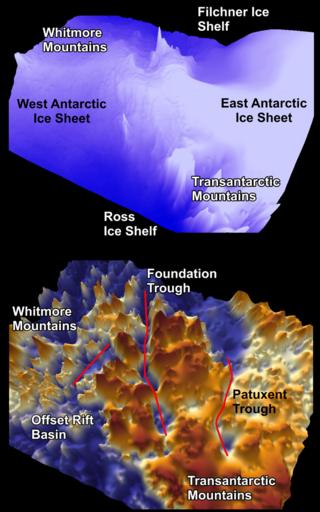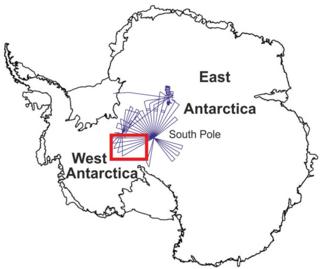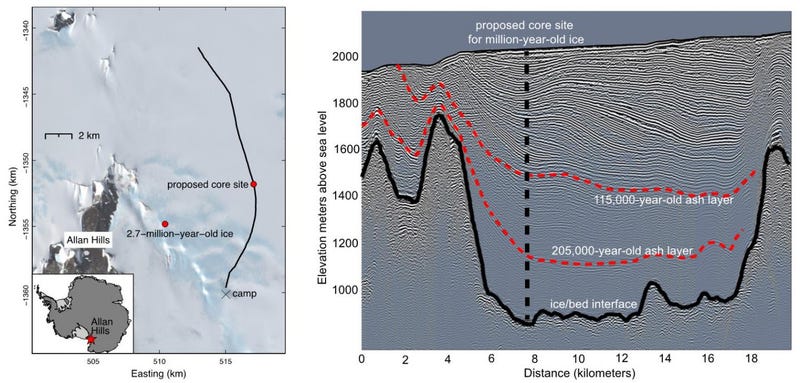The fight to own AntarcticaCompetition for natural resources, research and tourism is putting pressure on the cold war-era treaty that guarantees order on the continent
Antarctica is a continent with no government. The closest thing it has is a drab, 10-person office, with a small sign on its wooden door in Buenos Aires that reads “Secretariat of the Antarctic Treaty”. This is the group whose job it is to keep things running smoothly among the 53 nations that together govern Antarctica.
If that sounds like a quixotic system for a continent twice the size of Australia that contains vast untapped natural resources, it is. But the idealism underpinning it is very clear.
“One of the amazing things is that Antarctica is the only continent where people work together for peace and science,” says Jane Francis, head of the British Antarctic Survey, who last week attended the annual Antarctic Treaty Consultative meeting that brings all of the nations together. “You wouldn’t believe that 53 nations after two weeks can agree . . . It can be done in this world.”
Antarctic map and diagram of land claims
However, not everyone does agree. And at last week’s meeting in the Argentine capital some of those divisions were on show. There is a growing number of issues that the Antarctic Treaty System, which has kept order on the continent for almost six decades, is struggling to deal with. From climate change to fishing, new geopolitical tests are facing Antarctica that are increasingly difficult for a consensus-based group to address.
“One of the things the treaty system needs is almost like a new kind of vision,” says Klaus Dodds, a professor of geopolitics at London’s Royal Holloway University, and an expert on Antarctic governance. “One where parties are explicit about what they are trying to do.”
Timeline of the Antarctic treaty
The Buenos Aires meeting was typical: it produced a series of agreements that represented relatively low-hanging fruit, such as new rules for drone use, and guidelines for heritage sites (like the hut built by Ernest Shackleton and his team more than 100 years ago).
But the thorniest issues — for example, what happens when countries violate the treaty rules — are almost never addressed. Scientists and diplomats are growing concerned that the existing system will be unable to respond to the new pressures. At stake is the last pristine continent, one that contains the world’s largest store of freshwater, huge potential reserves of oil and gas and the key to understanding how quickly climate change will impact the world through rising sea levels.
“What we are seeing at the moment . . . is almost like a lethargy among the treaty parties to take the necessary steps,” says Daniela Liggett, professor of geography at New Zealand’s University of Canterbury. The last major binding protocol in the treaty system came into force 20 years ago, she adds. Any new protocol must be approved by consensus, so even one dissenting country effectively has veto power.
A tourist enjoys the view in Pleneau Island, Antarctica © AFP
The greatest areas of tension are those that touch on the growing economic and strategic interests in Antarctica, such as tourism and fishing (mining is banned). Signatories to the treaty, which dates back to 1959, agree to set aside their territorial claims, and use the continent only for peaceful purposes.
However, the growing number of signatories has made the system unwieldy: In 1980 there were just 13 countries that had “consultative” status to make the key decisions on treaty matters — that number has risen to 29, a diverse group ranging from Finland to Peru, India and Belgium. Meanwhile the number of permanent scientific research stations on the island, a proxy for activity, has grown to more than 75. China has been a particularly enthusiastic builder of new research stations since it joined the treaty in 1983, and the environmental approvals for its latest, a fifth base, have caused division among the treaty members.
“Resources have always been the big trigger,” says Prof Dodds. “Once you get more explicit about resource exploitation, then you raise the troubling issue of who owns Antarctica. That’s the issue that haunts the Antarctic Treaty, and the Treaty System more generally.”
An aerial view of the Larsen C ice rift in Antarctica last June © AFP
Those anxieties are growing in tandem with Antarctica’s importance. The continent is covered in an ice sheet up to a mile thick and represents a window into how the planet is changing. Temperatures in some parts of Antarctica are rising much faster than the global average, and the pace of glacial melting there will help determine how quickly global sea levels rise in future.
The Southern Ocean, which surrounds Antarctica, is becoming a significant fishing ground, as resources in other seas are depleted. And it plays a crucial role in absorbing heat and carbon from the atmosphere, in ways that are not yet fully understood.
“Things have changed profoundly,” says Damon Stanwell-Smith, a marine biologist who first visited Antarctica more than 25 years ago. “It is visible in a human lifetime — the change in coastal waters, ice, retreat of glaciers, and then the related wildlife movement. Nowhere else has it been so obvious.”
Chart showing that visitors to the Antarctic are on the rise
A critical factor is the addition of many more visitors. Mr Stanwell-Smith heads the International Association of Antarctica Tour Operators, the closest thing the region has to a tourist police.
Last month Iaato reported that the number of visitors to the region rose to more than 51,000 last season, an increase of 17 per cent on the previous year. That number is expected to keep growing. Some 20 new polar expedition vessels are under construction, adding to the 33 already registered with Iaato, to serve the growing interest, says Mr Stanwell-Smith.
The race to understand Antarctica
For most tourists — who pay between $10,000 and $100,000 for a trip — visiting Antarctica involves stepping off the boat at just a handful of highly regulated landing sites. But there are loopholes in the system, such as private yachts that flout permitting rules, as well as a growing number of tours that involve activities such as kayaking or skiing.
“It’s becoming a bit of an adventure playground, and the trouble is the unregulated tourism,” says Prof Francis, at the British Antarctic Survey. “It has become much easier for people just to sail their yachts to Antarctica, to fly their private aircraft to Antarctica.”
The fastest-growing source of new visitors last year was China, which was second only to the US in the ranking of total tourists. At the same time Beijing is investing heavily in missions to Antarctica, part of its plan to become a “polar great power” — moves that have not always been welcome. One idea that has been met with concern is China’s proposal for a special “code of conduct” that would apply for a large area around its Kunlun Station research base, which has been seen as an attempt by China to limit activities near its base.
The construction of China’s fifth research base has also been controversial because preliminary building activities were started before the environmental impact assessment was complete, in violation of protocol. The lack of punishment for these — and similar infractions by other countries — is one of the weaknesses of the treaty system.
China spends more on its Antarctic research programme than any other country, according to Anne-Marie Brady, professor of political science at the University of Canterbury and editor of The Polar Journal. China’s interest is not limited to the potential natural resources available, but also the continent’s strategic importance — having a ground station near the South Pole can increase the accuracy of global satellite navigation systems.
The Royal Navy’s patrol ship breaks through ice in Ross Sea, Antarctica © EPA
The US, Russia and China all have critical infrastructure in Antarctica to aid their global positioning systems. “That makes Antarctica very, very interesting right now,” says Prof Brady. She adds that the Antarctic Treaty System may be poorly equipped to respond to a growing “clash of values” in the region.
“There is a lot that is unresolved [in the treaty] and may not be fit for purpose for our current global strategic environment,” she says. “If the Antarctic Treaty is going to be sustainable, there has to be more high-level attention paid by governments on how to adjust to the changing environment and how to protect Antarctica.”
The Chinese Arctic and Antarctic Administration declined a request for an interview.
Dr Matt Davey of Cambridge University digs for snow algae on Lagoon Island near the British Antarctic Survey base Rothera © Charlie Bibby
China and other countries are positioning themselves for a day when the current confines of the Antarctic Treaty System may no longer apply. While it does not technically expire, the provisions that ban mining could change after 2048 — the year in which the environment protocol is expected to come up for review.
As the number of signatories has expanded it means there will be far more voices involved in any potential review. “What role do these countries [not among the 12 original signatories of the 1959 treaty] intend on playing? For sure, they have one eye focused on the resources that might be available in the future,” says Máximo Gowland, Argentina’s director for Antarctic foreign policy.
Giant icebergs calve from a glacier and into the waters surrounding Antarctica © Charlie Bibby
He points out that both water and mineral resources could become an issue. “You don’t know how quickly the situation might evolve,” he says, mentioning the severe water shortages in Cape Town , where the idea of towing an iceberg from Antarctica to South Africa, to ease the crisis, was discussed.
Already the treaty system is struggling to protect resources in the Southern Ocean, where fishing for krill is on the rise. Opposition from China and Russia has repeatedly delayed the creation of new marine protected areas, a topic that will be discussed again at a meeting in October.
Another unresolved issue is bio-prospecting — taking biological samples from Antarctica to study in a lab. Because the species that exist in Antarctica are adapted to extreme cold conditions, they could contain compounds with valuable commercial or pharmaceutical applications. Yet the question of who owns the intellectual property from these samples is impossible to solve, because of the many and varied sovereign claims on the continent.
Princess Elisabeth Antarctica Research Station
While there is no indication that anyone is about to take the step of quitting the Treaty System, there is equally little hope that it will be able to reform itself. A risk is that it simply becomes less relevant as it fails to address the challenges facing the continent, says Prof Liggett.
Evan Bloom, the top polar diplomat in the US, which sends the largest number of scientists and tourists to Antarctica each year, says Washington supports the treaty system despite its limitations. “It has worked quite well in terms of setting aside those political differences, and allowing science to occur,” he says.
How much longer that continues to be the case will rely on a fragile treaty that is about to face its greatest tests.
‘Limited friction’ Tradition of co-operation endures on the continent
The Antarctic Treaty, signed in 1959 at the height of the cold war, was focused on denuclearising the continent and avoiding military conflict, and the 12 original signatories all agreed to set aside any territorial claims there for the duration of the treaty. Subsequent agreements addressed issues like fishing rights and extraction of resources (which is banned), creating a group of deals called the Antarctic Treaty System.
“The Antarctic is a very positive symbol in a lot of ways,” says Claire Christian, head of the Antarctic and Southern Ocean Coalition, adding that the treaties were “extremely forward looking” when they were written.
Eight years after the first treaty was signed, it was used as a loose model for the Outer Space Treaty, and is still seen as a template for how to govern areas that fall outside of traditional national boundaries. Today diplomats wonder if it could be a model for the Arctic region, where climate change has opened up new shipping routes and created new sources of tension.
Evan Bloom, the head of the US Office of Oceans and Polar Affairs, says that many of the geopolitical tensions in the rest of the world are filtered out in Antarctica. Everyone who endures the South Pole’s harsh climate has to rely on their neighbours to survive.
“Those frictions are relatively limited in part because the tradition of co-operation in Antarctica flows from the way that the science programmes relate to each other,” he says. “If you are running a science camp or a research station in a remote place, you have a real incentive to work with other nearby stations, regardless of their nationality.”
Mr Bloom says occasionally his colleagues at the US state department will ask him whether similar models could be applied in other parts of the world. “Middle East peace negotiators come and say, this Antarctic Treaty System has worked out really well, is there something we can apply,” he jokes.
https://www.ft.com/content/2fab8e58-59b ... ceb45fa9d0 



